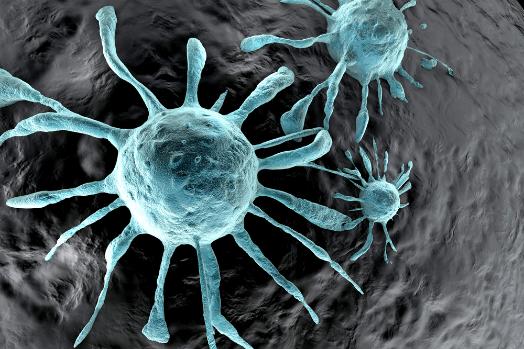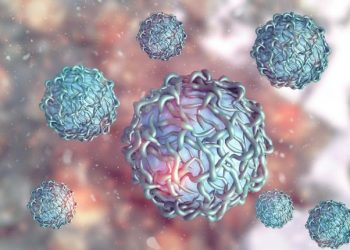Glioblastoma grows into the brain tissue and surrounds it, so it’s difficult to remove all cancer cells. Most people get surgery, radiation and chemotherapy after a biopsy of the tumor to kill cancer cells that aren’t removed.
Radiation and chemotherapy may cause side effects. We’ll help you manage these.
1. Headaches
Glioblastoma multiforme (GBM) is the most common and aggressive brain cancer in adults. It forms in star-shaped cells in the brain called astrocytes and usually grows fast. The tumor swells the tissue around it, pushing on areas that govern movement and speech. These are called eloquent regions of the brain.
One of the first symptoms of a glioblastoma is headache. The aches typically don’t respond to over-the-counter pain relievers and may be more severe with stress. They can also be triggered by certain foods and can cause nausea or vomiting. A neurologist or a physiotherapist may be able to help with these symptoms.
Other glioblastoma symptoms include vision changes, memory loss, seizures, weakness on one side of the body and difficulty swallowing. These symptoms are due to the pressure from the tumor and can also be caused by the location of the brain tumor. It’s more likely to happen in eloquent regions of the brain, where the tumor is most often found.
Doctors don’t have a clear cause for glioblastomas, but they know that the disease tends to be more common in people who have received radiation to the head before. They also believe that hereditary cancer syndromes, such as Li Fraumeni syndrome, neurofibromatosis type 1, and Turcot syndrome, can lead to the development of a glioblastoma. Glioblastoma can also develop spontaneously, without a lower-grade tumor as the precursor. The disease has a poor prognosis, even with treatment. It’s one of the most difficult and dangerous types of brain cancer to cure. The most recent treatments include chemotherapy and immunotherapy, which uses the immune system to fight the tumor. This combination of treatments has increased survival.
2. Nausea
Glioblastoma is a fast-growing brain cancer that starts from cells called astrocytes, which support nerve cells. These tumors can grow and spread throughout the brain, causing symptoms such as nausea and vomiting. The disease can also affect the nervous system, affecting balance and movement.
These tumors are the most common type of brain cancer in adults. Doctors don’t classify glioblastoma tumors by stages, but instead give them a “grade,” which is based on how quickly they grow and how likely the cells are to reproduce. Glioblastoma is classified as grade 4 – the most aggressive type of brain cancer.
The most common glioblastoma symptoms include headaches that continue to get worse, nausea and vomiting, blurry vision and seizures. These brain tumor symptoms are caused by the extra pressure in the skull from the growth of the tumour and the way it spreads through the brain and spinal cord.
A neurologist will examine you and may order an MRI to find the location of your tumor. They will also use functional MRI (fMRI) to see whether the tumor is near areas that control functions such as speech or movement. They may also use MRI spectroscopy to measure the levels of certain chemicals in your brain to help with diagnosis and treatment.
The main treatments for glioblastoma are surgery, radiation and chemotherapy. Doctors will try to remove as much of the tumour as possible, but they might not be able to completely remove it. Radiation might be used to kill any leftover cancer cells, and chemotherapy might be given if the tumour has spread to other parts of your body or is difficult to remove. Temozolomide (Temodar) and lomustine (CCNU) are chemotherapy drugs that doctors might use to treat glioblastoma, along with bevacizumab (Avastin or Mvasi). Other types of medication can also be used to prevent cancer from spreading, including MGMT inhibitors such as dasatinib.
3. Memory loss
Glioblastoma multiforme, or GBM, is a fast-growing type of brain tumor that affects nerve cells in the brain and spinal cord. It is the most common and deadliest primary brain cancer in adults. It rarely spreads to other parts of the body. It usually starts in areas of the brain that control movement and speech, but can also occur where other organs begin. As the tumor grows, it takes up space and increases pressure within the skull.
Memory loss is one of the most common glioblastoma symptoms. It may be caused by the disease itself or by treatment. Short-term memory is often affected first, while long-term memories are more likely to be affected later. Fatigue can also exacerbate memory problems, as can stress.
A neurologist — a doctor who specializes in diagnosing and treating brain disorders — will give you a physical exam and ask about your symptoms and family history. Then they’ll do an imaging test, such as an MRI or CT scan. They’ll also examine your eyes to look for swelling (papilledema) in the optic nerve, which connects the eyes to the brain.
In most cases, a neurologist will recommend surgery to remove the tumor. They’ll work to remove as much of the tumour as possible, but it might not be possible to remove all the tumour cells. Most people will have other treatments after surgery to get rid of any remaining glioblastoma cells.
Your neurologist will examine the tissue from your tumor to find out how it’s responding to treatment. They’ll also use a biopsy of the tumour to get more information about the tumor’s makeup. They can then choose the best treatment for you.
4. Seizures
Depending on the type of brain tumor and its location, people with glioblastoma may experience seizures. These can be caused by the tumor pressing on nerve cells and interrupting normal brain activity. The type of seizure experienced can vary, but symptoms include confusion, trouble with speaking and expressing oneself, physical weakness on one side of the body, problems walking or balance, and restricted vision. Some people have a warning sign before they have a seizure, called an aura. They might notice a change in mood or a sense that something is about to happen (premonition). They might also feel numb or have a sudden feeling of weightlessness. Some have a partial or full seizure, while others only have a confused awareness and minor shaking, stiffness of the muscles or chewing movements.
The doctors who treat glioblastoma will usually prescribe antiseizure medication and steroids to help relieve the symptoms. They may also offer palliative care to manage pain, nausea and other discomforts related to the cancer.
Glioblastoma arises from the glial cells that support nerve cells in the brain and spinal cord. The three main types of glioma are astrocytomas, which develop from astrocytes; oligodendrogliomas, which form from oligodendrocytes; and ependymomas, which arise from ependymal cells.
The treatment for glioblastoma depends on the type and grade of the tumour, its location in the brain or spinal cord, and whether it has spread to other parts of the body. Surgery to remove the tumour is generally the first step, followed by radiotherapy and chemotherapy, if needed. People with a recurrent or relapsed glioblastoma may be offered repeated cycles of temozolomide, which targets the glioblastoma and other cancer cells that have not yet been killed by the original therapy.
5. Depression
Glioblastoma develops from glial cells that support nerve cells in the brain and spinal cord. These cells are similar to those that make up the brain tumors astrocytoma and oligodendrocytes, but GBMs grow faster than other types of brain tumors and tend to spread quickly. This spread of cancerous cells makes them hard to treat.
These brain tumors can cause a wide range of symptoms that affect the body and mind. If you experience any of these symptoms, it’s important to see a doctor right away. They will be able to run tests and provide treatment options.
Glioblastomas are almost always treated with surgery, radiotherapy and chemotherapy. Radiation therapy uses radiation to shrink or kill a tumor, while chemotherapy is medicine that travels through the bloodstream to target cancer cells. During surgery, doctors remove as much of the tumor as possible without harming healthy brain tissue. However, a tumour can’t always be removed completely because it is located in areas of the brain that control vital functions such as movement and speech.
The most common type of glioblastoma is called primary glioblastoma, which forms in new places in the brain or spinal cord and usually grows fast. It is more likely to happen in people 60 years of age or older.
A person’s chance of getting a glioblastoma is much lower in younger people and in those who don’t have genetic syndromes such as Li-Fraumeni or Lynch syndrome. It is also less common in people of color. If a glioblastoma does occur, the survival rate is best for those who get it diagnosed early. The diagnosis is confirmed through histological testing that looks at a sample of the tumor under a microscope.









